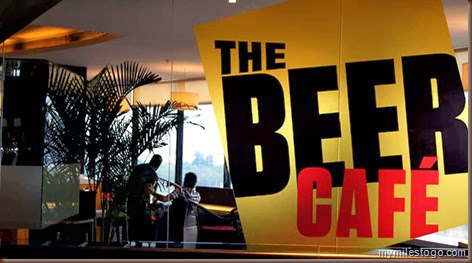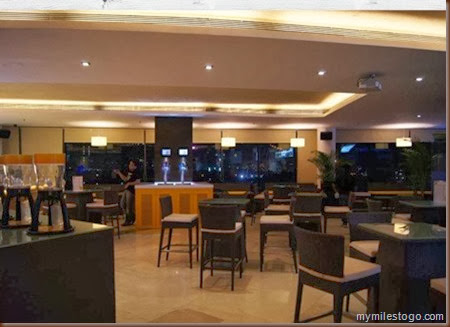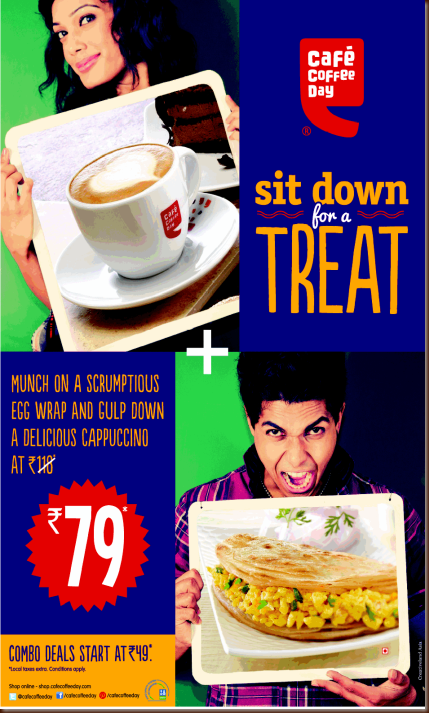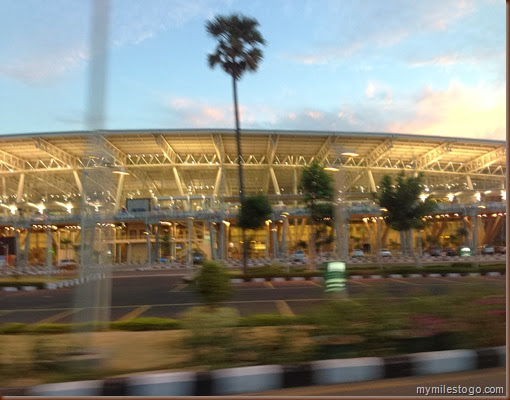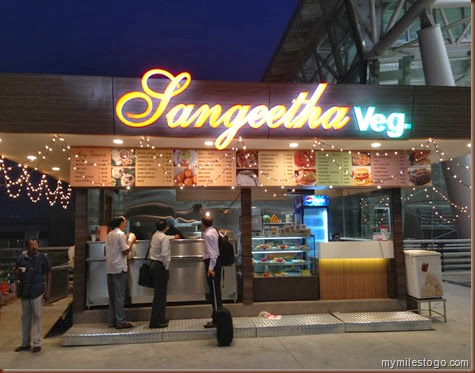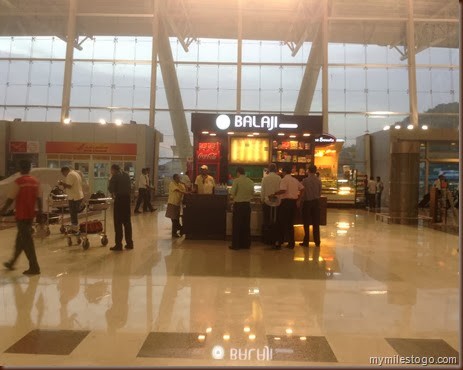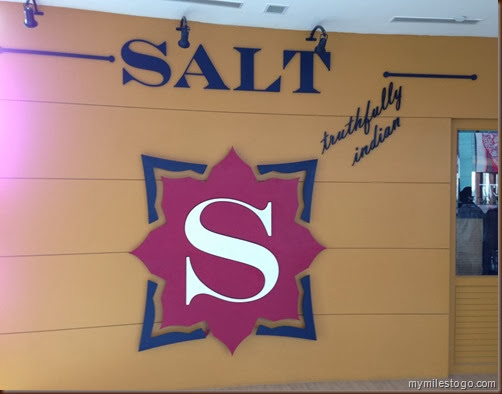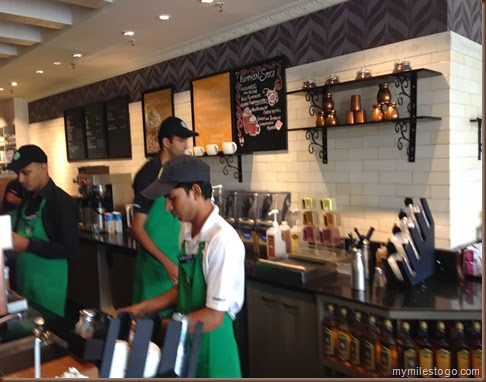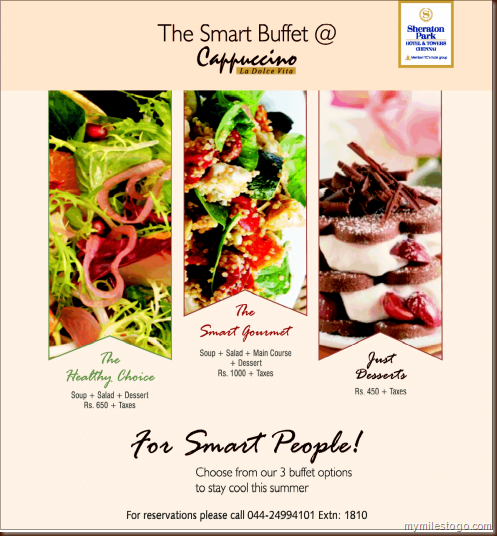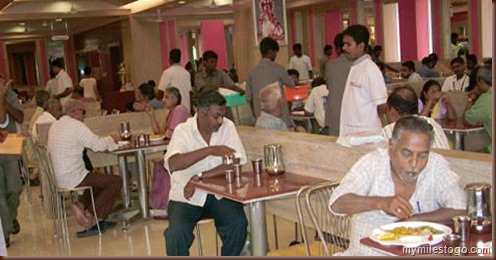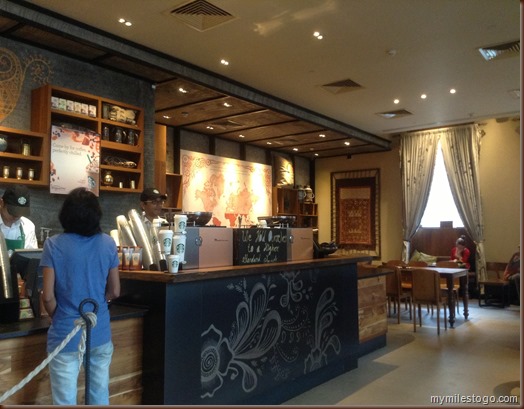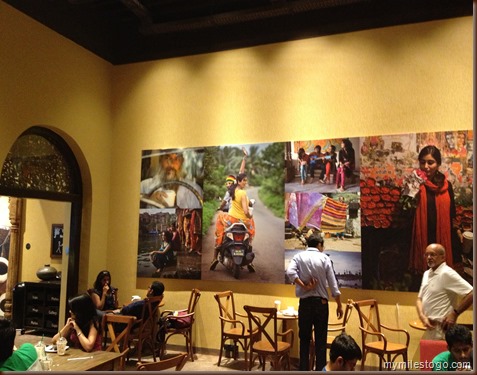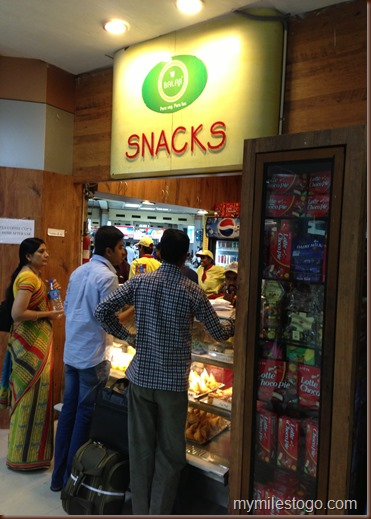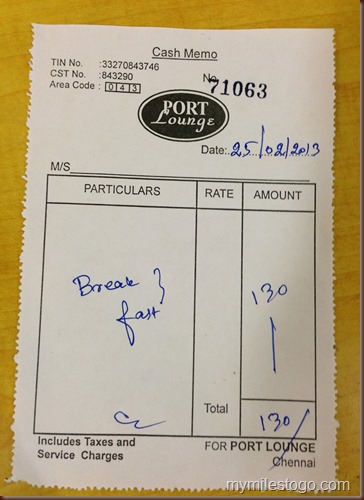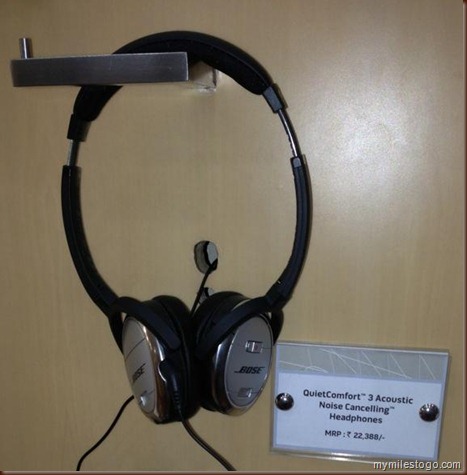23 October, 2016
UDAN - a A Flight for Retailers
31 March, 2016
FDI in Ecommerce
01 July, 2015
Are Cafes sustainable?
23 January, 2014
Dining experinces redefined

And then there are two large hotels which have over 25 rooms each, one being Hotel Vista Park where I stayed. These hotels also have restaurants and a small bar. To my utter surprise, there was literally no one in the in-house restaurants in the evenings. I would have expected the hotels to run a few schemes such as Happy Hours in the Bar or Food combos. But no. The staff were not bothered that guests were walking away to nearby restaurants. The Management seemed to be unaware as well.
So, are stand alone restaurants, pubs and cafes a threat to these Hotels? Indeed. To circumvent this kind of a spill over, Ginger Hotels, a part of The Tata Group had tied up with Cafe Coffee Day. The cafes of CCD are located within the premises of these hotels, usually in the lobby and would normally be open 24/7 and would even serve piping hot Cappuccinos and Sandwiches to the rooms. Most of the Ginger Hotels have these cafes. A few standalone hotels too have made such arrangements to attract non-resident guests and the public at large. In the West, it is common to see cafe chains such as Starbucks, illy, Costa, to name a few to have their cafes within smaller boutique/business hotels.
21 November, 2013
Brewing Cheer with Beer!
I recently happened to meet Rahul Singh, Founder and CEO of “The Beer Café”, an upcoming chain in Delhi NCR, based out of Gurgaon. Rahul comes across as an affable person, having spent over 20 years in the Indian Retail Industry. Before turning entrepreneur, Rahul was working for Reebok as Executive Director and was responsible for sourcing apparel for domestic as well as export markets. An electrifying guy, Rahul seems to have a natural flair for entrepreneurship. It was a chance meeting to discuss a business proposition but turned out to be a very engaging 90 minutes one on one. Prior to The Beer Café, Rahul was responsible for creating the first ever indoor Golf centre along with F&B and Entertainment at Gurgaon, at the upscale Ambience Mall.
I couldn’t resist but to ask Rahul how many months did he take to come up with the idea of a Beer only place. He was quick to retort saying that it took him just two months! I loved the way he simplified his method of narrowing down the concept. According to Rahul, there are three broad categories in the F&B Business – Fine Dine, Quick Service and Fast Food. He chose the Fast Food model. Within that, there were two options – to focus on food or beverage and he chose the latter. And within Beverages (read Coffee Café chains like Café Coffee Day, Barista, Costa Coffee, Gloria Jeans and Starbucks which have more than 2,000 cafes in India), he chose cold beverages and that’s how the idea of Beer Café was born. Simple idea that relies on classy execution.
Rahul wants his chain to be the CCD of beer and conversations. Alcohol frees up the mind and the soul and today, one has fewer choices to consume a pint of beer, either at a restaurant or at a Pub (home parties are a limited choice though). So, he wanted to set-up Beer Cafes in convenient locations where people could drop by with their friends or colleagues at work for a quick chat or a relaxed conversation.
The Beer Café now has over 11 locations within Delhi/NCR and would have about 30 operational outlets within the next three months! With VC funding coming in, Rahul hopes to grow the café network substantially over the next couple of months. His only gripe: Real estate costs of First World with consumer spends of Third World. Every Retailer would agree to this quote. Operating Costs, especially store rentals are extremely high and staff attrition is another big challenge. Rahul is now looking for an able COO to run the business, so he could take a bigger role in managing Strategy and Expansion.
The café is very appealing, with bright lights and a friendly attitude of staff. On a weekday evening when I passed by at the Beer Café at the Ambience Mall at Gurgaon, there were many who were having a good time seemingly. And many more would be in times to come.
07 November, 2013
Should Cafes Advertise?
I came across two special offers by India’s leading café chains Café Coffee Day and Barista today. One was through a email campaign – Buy One (Cappuccino), Get One Free. And the other was on newspapers – a combo offer of a Cappuccino and Egg Wrap at a discount of over 35%. And this was not an isolated case – both these café chains have been advertising in the mainline media for quite a while now and have also been continuously offering discounts over the past couple of months on their products. And all this for attracting footfalls into their cafes. with the onslaught of new café chains such as Starbucks over the recent months and those such as Gloria Jeans, Costa Coffee and other regional café chains, this space has been witnessing active poaching of customers. However, the regulars haven’s shifted loyalty, and that’s in the proof of the pudding. If that were the case, monthly sales of these chains fluctuate quite much, which has not been the case.
The biggest effort for cafes, contrary to what we believe is not just retaining existing customers but attracting new ones as well. CCD, as it is popularly known has followed a deep penetration strategy in large cities like Bangalore (where it is headquartered), Mumbai, Delhi, Hyderabad, Chennai and Kolkata. There are over 8-10 cafes of CCD within a 3 sq. km radius in Bangalore and all cafes are full with guests in peak times. Chennai, the hotbed of the South Indian Coffee culture has grown slower for CCD than other cities. That’s perhaps because the iconic Filter Coffee available in regional restaurant chains such as Saravana Bhavan, Ananda Bhavan, Vasantha Bhavan, to name a few are just unbeatable. The modern cafes also do not prepare the filter coffee and are more popular with the Cappuccino, the Latte, the Americano, the Espresso and ofcourse the cold coffee varieties which are difficult to replicate and are not easily available at other restaurants. Barista, which has slowed down its growth over the past three years and has focused on store profitability rather has been a pioneer of the coffee culture in the North, especially in Delhi. It has also been heavily advertising especially in conjunction with India’s leading newspaper Times of India about various offers.
So, this set me out thinking, “Should cafes advertise?”
The first answer that comes to my mind, is Yes, indeed they should. Every company must advertise its products and services through relevant media to their target customers. There are two kinds of advertising, I would say. One is the Corporate form; CCD came up with its campaign “sitdownism” a few months bacj which was an instant hit among the youth and was well appreciated within the Advertising faternity. And the other is advertising its products and services. But then, for cafes, in my opinion, being present in a locality is itself the best form of advertising. The store itself is an advertisement (and holds true for other retail formats too). Be it Malls or High Streets or Airports, Café are often point of direction or a meeting place. CCD at Bangalore Airport is located in a very prominent place such that no one can ever miss seeing it. Same applies for Gloria Jeans at Hyderabad Airport. However, At Delhi Airport’s T3 Terminal, Starbucks is quite tucked away and is almost missed by everyone.
The café should rather focus on the following to retain customers and to attract newer ones mainly through word of mouth;
- Ambience
- Convenience
- Familiarity
- Consistency
- Quality
These are some factors which potential customers would consider before they step into the café for coffee and conversations. Most of them, even college kids who are the most targeted for such cafes do not like to indulge on products that are heavily discounted. Or would like to be seen in places which are positioned as being “discounted”. I would wonder then, why do cafes scream so loudly that they have products which are “discounted” and gain adverse publicity. A satisfied customer would get ten more, goes an old saying. Cafes would do better in attracting newer customers if they provided top quality Coffee and other Food & Beverages to its customers with consistent quality and convenience (Read: Furniture, Sofas, Chairs, Plug points for Laptops, Wi+Fi, toilets) and make the place a familiar one for them to revisit. Afterall, cafes are meant to be the third alternative place after Home and Office and hence need to be the first point of recall for customers to walk into.
28 October, 2013
Chennai Airport is a sham(e)!
Even before I was part of the exciting world of Airports (in 2006), I have always been a big fan of the commercial opportunities at transit points, be it the railway stations or bus terminals, let alone airports. It was always a craze to have a cup of coffee at the railway station when we would go over to pick up our loved ones arriving from long distances, especially if the visits were made once in a couple of years. It was yet another joy to consume within trains – from Rajdhanis to Shatabdis to the passenger trains that would have hawkers selling everything from peanuts to guavas to oranges to chips and snacks. The joy of consumption during travel would somehow take over the joy of travel itself.
I have been using airports for just over 15 years now. My first flight was to Mumbai from Chennai to attend a job interview with a leading Retail Chain, with air tickets being sponsored by the company. That was the first time I was inside an Airport terminal, although I have been several times before that to drop off or receive guests from the Chennai Airport. The airport was and continues to be an important piece of the growth story of the state (of Tamilnadu) as well as served as a gateway to the rest of Southern India. In 2005, when the Government of India announced privatisation of Airports, the most protests were seen outside the Chennai Airport, the maximum being only second to the city of Kolkata. The staff of Airports Authority of India (AAI) and allied agencies protested that their livelihoods would be lost if the airport was privatised. The Government succumbed to pressure; Chennai’s loss was to the gain of Bangalore and Hyderabad. Both the cities claim to be the Gateway to South India and came up with world class private airports in the outskirts of the city in 2008, albeit the cities have been growing faster in their respective airport corridors over the past 8 years. Mumbai and Delhi somehow managed to keep the privatisation tab on. Delhi’s T3 Airport Terminal, which is managed by the GMR Group was built in record time and is now ranked among the top 5 in the world, consecutively for the past 3 years. Mumbai Airport, managed by the GVK Group built two new terminals for Domestic and International passengers and is struggling the political onslaught for space within its precincts which has been occupied by the public at large. Kolkata and Chennai Airports were allowed to be redeveloped by AAI and the work completed early this year with a time overshoot of over 9 months and a cost escalation of several hundred crores.
According to a recent survey by passengers on sleepinginairports.com, Kolkata Airport has been ranked 2nd worst in the world, with Chennai following a close third. What an infamy for a state which is considered the Detroit of India housing majors such as Ford, Nissan, Hyundai, Royal Enfield, Ashok Leyland, Hindustan Motors, MRF Tyres, Saint Gobain, Nokia, Samsung and many more! Chennai Port handles one of the highest loads in the peninsula. Chennai’s knowledgeable crowd contributes significantly to the Indian economy with Chennaites occupying important positions in the Indian Government as well as in global positions worldwide. And we have such a dud of an airport!
I feel quite disappointed, first as a citizen of the country and then as a resident of the city to pass through such an unglamorous airport every week, when I travel on work. The facilities are poorly planned. The Four Cs of airports, Comfort, Convenience, Cleanliness and Customer Service are shameful, to say the least. The only saving grace is the imposing façade which looks attractive for those passing by on the Grand Southern Trunk Road outside, but nothing more inside. There are no refreshments available outside the terminal, save for a sole counter which sells local cuisine at thrice the price of what’s sold downtown and a small kiosk of Café Coffee Day. The check-in hall has two ‘counters” where one needs to stand and eat snacks or sip coffee, just next to a dustbin which usually overflows, as though it’s a sort of a punishment. There is no bookshop or any other similar offering around; the only thing that solves passengers’ woes being the complimentary newspapers. The Departure areas are even worse. The layout of shops and other convenience is so bad that one would rather not step in than feeling disappointed thereafter. Cookieman and Frech Loaf are the only saving grace in the mess, although tehir products are meant to be take aways rather than consuming then and there. No Foodcourts or QSRs, just a restaurant located at the far end of the terminal. Services such as Taxi Operators and Forex are abysmally managed, with long queues for taxis in the peak hours in the evenings with unavailability of taxis for passengers. Airside services such as baggage handling are terrible. There are only four baggage belts and checked in luggage may arrive anywhere between 15-45 minutes after you land at the airport. There are only four aerobridges and the buses which provide ground transportation from the terminal to the aircrafts are poorly maintained. There is no complimentary Wi+Fi within the terminals. The airline staff and security staff from Central Industrial Security Force or CISF have a similar attitude as those who manage the airport – one that is indifferent and unfriendly. After all, it’s not just their fault since there is no one to oversee how good (or bad) their service towards passengers is.
I still believe there is hope. There is a plan to privatize the terminals through an open tender and the decision is expected to be taken by the end of this year with work to begin early 2014. Senior Executives from the companies which plan to bid had visited the airport to conduct a survey two weeks back were apparently welcomed by protestors from AAI, shooing them back not wanting privatization. But this time around, the Government doesn’t seem to back out. Hopefully, good sense would prevail and the airport would be handed over to a competent agency to serve passengers better.
An Airport is the face of a city and must display pride of place. It is the first point where international visitors to the country alight at. It is indeed important to put up a great one and maintain it as well. Lets hope.
28 September, 2013
Restaurants in Malls…
I was recently at Forum Vijaya Mall (Chennai), one of the newest in town. It was a Sunday and I was there for lunch, but the upper level of car parking was almost empty around noon, which took me by surprise. However, I was told two days later by someone who works for the Mall that there were over 45,000 footfalls on that day. The Restaurant that I was supposed to visit was located on the second floor of the Mall. As is usually the case, I checked the reviews of the restaurant on the Zomato app on my iPhone. Most of them had written good things about the place and its menu, not to forget their wonderful service. Here is a sample;
After such a good meal, the bill came to around 2500 bucks. "Not bad at all!", we thought, given the amount of food we had eaten. The service too was perfect. The waiters were very watchful, responsive and most importantly, proactive. – Amruth
A great place with tastefully done interiors and food! The options on the menu are limited, but every single item you are served taste good and also look really good on the plate! – Nandhini
If I have to be perfectly honest, there could not be a more unfortunate location to host such a lovely restaurant. A mall in Vadapalani is hardly any place for a classy place like this. Where venue fails, Salt takes North Indian Cuisine and gives it a fantastic twist, to ensure they stand out from the others. I expect much more of this restaurant in the near future. – Vaishnavi
Apart from many reviews, the one above set me thinking. Are Restaurants in Malls a viable option as compared to those on high streets? Are Mall shoppers the right TG for specialty restaurants in Malls? For the cost of operation in Malls, do restaurants make any money at all as a business option? When I spoke to the gentleman who runs the restaurant, he mentioned that the rent is about Rs. 65 per sft per month. Assuming they have an area of 2,000 sft, their rent per month would be about Rs. 1.30 lakhs. Add to that all other expenses which would be around Rs. 2 lakhs pm. On a conservative estimate of Rs. 15 lakhs of sales per month and an operating margin of 50%, the store would recover its expenses and have an EBIDTA of about Rs. 2 –3 lakhs per month. Given the way the outlet has been done, their investment would have been about Rs. 70 lakhs. So, the restaurant makes about Rs. 25 lakhs in profits (before interest and taxes a year) and would take about 3 years to break even.
On the contrary, business would be double, if not more were it to be on a High Street. There are a number of good quality specialty restaurants that are garnering those numbers already. So, why do Restaurants still prefer Malls? Perhaps, Brand building and familiarity. I don’t see any logical reason why someone would invest so heavily in a Restaurant inside a Mall and wait for 3-4 years to break even, when it could be faster in a High Street. What works best are for established brands such as Rajdhani, Sigree, Mainland China, etc. which have built reputation over the years and have hence chosen to be within Malls to leverage their brand value. For first timers in the Restaurant business, Malls are probably not the place to be in. This is not restricted just to Chennai but to other cities as well. I was at Chandigarh a few weeks back and they have a brand new Mall called Elante. I was almost alone at Chilis on a weekday evening, which is located in the same floor as the cinemas on the fourth floor of the mall. Restaurants in India’s most successful Mall, Select City Walk face the same fate – Restaurants are empty through the week with weekends being their only busy times.
So, what ails Restaurants in Malls?
Mall shoppers are mostly for spending time, probably window shopping. Conversions for Retailers too is lower than on high streets. The sheer number of footfalls make up for lower conversions and therefore helps Retailers and Restaurants. Unless you are a destination such as a Shoppers Stop, Lifestyle, Café Coffee Day, Starbucks, Subway, KFC, Pizza Hut, etc. These are places which plan to visit and hence drop by. Eating out is way to expensive these days, given the cost of ingredients. And Restaurants are trying their best not to upset their clientele by absorbing losses as much as they can. But then, consumers are staying away from eating places on a regular basis, as was the case a couple of years ago. For example, a could of years ago, the neighbourhood area of Koramangala in Bangalore had almost 50 eating joints, a third of whom have closed over the last one year.
Mall hoppers prefer food courts instead, which are usually pathetically planned. Mall planners in India somehow do not build large enough food courts, with thousand of chairs and a breathable exhaust system, that are modular and scalable as and when consumers increase. Instead, they try to lease all counters at one shot thereby not having scope for further expansion in future. What would cost around Rs. 600 for a family of three in the food court would probably cost over 50% more in a fine dine restaurant within the Mall.
Restaurateurs would do well to experiment new concepts first on the High Streets. That is where people frequent. There are no SCAM, errrr CAM expenses (Common Area Maintenance) on High Street Locations and no restrictions to close the restaurant at a stipulated time. The biggest benefit of being on High Streets is that the signage builds familiarity among customers over time. No wonder, there are more successful restaurants in India and the world over on High Streets!
22 May, 2013
Inviting patrons for a great feast
The Hotel Industry in India is facing tough times ever since the global recession occurred a couple of years ago. In my current role at Royal Enfield as Head of Business Development, I travel atleast 2-3 days every week across the country. Whenever I try to book rooms in small and big cities, the room rates just surprises me. I was trying to look for rooms in Hyderabad for stay over the next few days and was surprised to find discounted rates at 5 star hotels for as low as Rs. 5000 (USD 90). The Leela and Grand Chola – both touted as 7 star rated properties in Chennai are offering over 40% discounts on printed rates, to as low as Rs. 7,000 (USD 130). Same is the case in Delhi, Gurgaon, Mumbai, Pune and is even worse in smaller towns. I stayed in Trichy, a city in central TamilNadu which connects a number of other towns of prominence in business and culture within a 100 km radius during the first week of May 2013. On the MakeMyTrip mobile app for the Apple iPhone, I could get a double room for three adults and two kids for as low as Rs. 2,500 (USD 55). The room was quite large to hold a King size bed and two single beds. I have stayed in cities like Coimbatore, Dehra Dun, Jammu, Patna and many others for similar rates in well maintained properties. The outlook for hospitality in India as such wears a glim look and with increasing inventory and competition, not to forget the choices that customers make, the pricing is aggressive at most of the properties. This is where ancillary income to Hotels are helping them.
Most of the hotels have in-house restaurants, mainly to cater to resident guests. Many of them advertise these restaurants quite heavily, thereby attracting visitors through the year irrespective of peak season or otherwise for room occupancy. While this practice has been there for long, its quite evident these days with a number of hotels including some premium Hotel chains advertising in the media. What caught my attention recently was an ad (displayed above), by ITC Hotels, one of India’s largest companies in the hospitality space for their Cappuccino Restaurant at the erstwhile Park Sheraton (in Chennai) . They have advertised buffet options with prices! Do those patrons who visit these places really care for the price? I mean – everyone does. But then, do people care what the final bill is gonna be when they visit star rated hotels and restaurants? I really doubt. Restaurant incomes are an important source of revenue for Hotels. They contribute anywhere between 7-25% of total sales depending on how well these restaurants are positioned and popularised. Some of the restaurants in these hotels are even Michelin-rated – a rating by the Vehicle Tyres powerhouse Michelin which grades eating joints across the world and shares in a report that is published annually.
Suggested Reading: Franchising
Stand-alone restaurants are doing their best too, to woo potential customers. They advertise in leading newspapers regularly to attract attention and over a period of time become destinations. In some cases, they are located within hotels and Malls and in many cases they are located on High Streets. User reviews in sites and apps such as Trip Advisor, Zomato, Burrp! etc. help them gain more traction. Chains like McDonalds, Pizza Hut, Subway and Café Coffee Day advertise across the media regularly to pull customers to their outlets and many of them even offer complimentary WiFi as a hook to retain them.
Suggested Reading: Does Free Wifi help?
With inflation leading to peak rates of food items, it is becoming impossible to middle class families to venture out eating outside. But the upper-middle class seems to be slightly more insulated, fuelling the needs of these restaurants. While premium hotels and restaurants promise great food (quality) and a wonderful ambience, consistency is key. To retain existing customers and to attract newer ones. If you are planning a visit to a nearby restaurant this weekend, flip through the pages of newspapers or mobile apps and you may be in for a surprise at a hotel nearby you! Happy Dining…
Suggested Reading: Food Inflation
30 April, 2013
The Third Place just got costlier!
On Monday, 29th April 2013, The Tamil Nadu Hotels Association (TNHA) observed a one-day strike to protest against the Central Government’s decision to impose Service Tax on their businesses. Speaking to the media, TNHA President M. Venkadasubbu said, “The TNHA had taken the lead to organise similar associations in all states in this regard and a federation, the Federation of Hotel Associations, had also been formed for the first time in the country.The announcement of Service Tax was made by India’s Union Finance Minister Mr. P Chidambaram in the Union budget and had already come into effect, beginning this month… (April 2013). The Service Tax of 12.36 per cent levied out of the 40 per cent of the sales proceeds is illegal and a big burden on consumers who are already forced to bear the brunt of price escalation due to inflation. While the hotels and restaurants were already paying VAT ranging from 2 to 14 per cent, the new Service Tax levied by the Central government would amount to double taxation,” he said. ‘This problem of double taxation was discussed at a meeting organised by the Federation of Hotel Associations (comprising office bearers and representatives of hotel associations from all states) in Mumbai last week and a unanimous decision was taken to launch a nationwide bandh if the Central government did not roll back the Service Tax.’
Eating out has become extremely expensive over the past decade. I remember, when I was in Graduate School, with pocket money of less than Rs. 300/- per month, we could meet most of our out-of-home expenses including filling fuel for our bikes. Not so these days. The purpose of having a meal outside home, The Third Place as it is called is not just eating. It’s all about building camaraderie and relationship/bonding with family and friends. Ray Oldenberg defined the third place as an alternative to Home and Workplace in his research paper in 1991. Oldenburg calls one's "first place" the home and those that one lives with. The "second place" is the workplace — where people may actually spend most of their time. Third places, then, are "anchors" of community life and facilitate and foster broader, more creative interaction.There were already numerous such spaces all over the world. Cafes, Restaurants and other Eating Spots are among the most sought after third-places. In India, cafes and eateries have burgeoned all over the country in the past few years. Café Coffee Day, India’s largest café chain has over 1,400 cafes across the country. Starbucks, Costa, Coffee Bean and Tea Leaf, Gloria Jeans, Mocha and many other such international and domestic café chains have their outlets spread across major cities, providing an opportunity to people to hang around and discuss everything under the sun – from personal banters to professional meetings to matrimonial discussions, one can find all of those out there. Apart from Coffee Shops, there are over half a million eateries of various shapes and sizes across the country which provide Food & Beverage options. For nuclear families, eating out is one of the biggest entertainment these days, what with very little time to spend with the family!
With the proposed new tax, food bills are expected to go up significantly to consumers. For example, on a bill of say, Rs. 1,000/- for a family of four, the Value Added Tax ranges from 2-14%, so lets assume its on an average of 8%. So, the bill goes up to Rs. 1,080/-. The service tax of 12.36% is applicable on 40% of the Sales, so that works out to Rs. 49.44, rounded off to Rs. 50/-. Hence the total bill to consumer now is Rs. 1,130/- just because this family chose to eat in an air-conditioned restaurant…where such a tax is applicable. The definition is quite clear – whether serving F&B in an air-conditioned area is a sale or a service. As per the recent amendment in the Law, its both. While food is cooked and sold, it is also served (by waiters) and hence considered a service. Also, the a/c facility is meant for seating and consumption, thereby making it amply clear that it is indeed a service. While this rule will bring about encouraging revenues to the Government, those that are meant to suffer are the middle-class consumers. For students and youngsters, visiting their favourite coffee shop or a fast food joint would get more expensive, thereby creating a dent on their pocket money. However, for the affluent and well to do, the proposed hike may not mean much, given that their spending power is relatively higher. In most cases, such individuals / families don’t even check the bill – probably pay (usually by a credit card) and sign-off.
While inflation and cost of consumption have gone up significantly, the income rates haven’t gone up proportionately. This has left the middle-class with fewer options for recreation. And Eating joints may not be the most preferred Third-Places anymore! For F&B Retailers, it means reduced number of visitors. And business too.
22 March, 2013
Free Wifi will be a crowd puller for Retailers
I was at the Starbucks (SBUX) outlet in South Mumbai a few days ago. SBUX, in a JV with the Tata Group opened their first outlet in India in South Mumbai a couple of months ago. We had a long day ahead and decided to start our first meeting at this location for the sheer purpose of convenience. And ofcourse, some good coffee. Not awesome coffee, atleast for me. For which I would go back to Café Coffee Day, India’s largest café chain with over 1,400 outlets across the country which in my opinion still brews the best coffee in town despite lapses in service levels here and there once in a while. I was pleasantly surprised that the SBUX outlet offers complimentary wifi to those who wish to have a sip or grab a bite and spend time around at their cafe. Ofcourse, for me it wasn’t the reason why I chose my meeting venue there. But then, anything complimentary is welcome in this mean world, I say. So there I was, connecting all my three devices – the laptop, the iPadmini and the iPhone on wifi sponsored by Tata Communications (I felt it was a great marketing opportunity for them although they didn’t seem to use it as well as they could). I was online for over half an hour, finished my emails for the morning and was all ready to step out for my next meeting. The staff at SBUX, as friendly as they were, cheered every customer who walked in or walked out with a customary welcome or thank you respectively. Even as I was walking out, I wondered how happy I was as a customer using complimentary wifi at the café. I have a USB Data Card for my laptop, 3G for my iPadmini and iPhone. But then, its sheer convenience and speed to use wifi.
I have been extensively travelling since Aug. 2012, ever since I joined Royal Enfield where I am responsible for Dealer Development and expansion of other key pet projects for the company. I book my hotels myself, mostly on my Make My Trip Mobile App for the iPhone or on their website although the former is quicker and handy. While most of the hotels provide complimentary wifi in their rooms, only a few work seamlessly. It is usually patchy and the front office staff are usually unable to resolve the connectivity issue blaming it either on the service provider or sometimes on my device! (Yes, at a Delhi hotel, the staff claimed my iPadmini was faulty). These days I look for reviews on sites like Trip Advisor while choosing a hotel that provides complimentary wifi. And most reviews are correct and genuine, as I have experienced.
That set me thinking, what if other Retailers provide Wifi to their customers. Would it bring additional walk-ins? Would it increase the stickiness? Would shoppers be showrooming – a term used for browsing the store for products and buying them simultaneously online, thereby increasing ECommerce? If so, would it help Retailers like Shoppers Stop and Landmark Book Stores which have a strong offline/online connect? I guess there are no immediate answers. Large Department Stores in the West have a café within their store so bored husbands and boyfriends could have a cup of coffee or a mug of beer while their wives/girlfriends are shopping. These days, my friends who live in the West tell me that Wifi is almost free everywhere around, which prompts them to choose a location for their need – be it a restaurant, a café , a book store or any other format of Retail. In India, unlike in the West internet bandwidth is minimal and the speed is not all that great. Cost wise too, it isn’t worthy for most Retailers to offer it free especially for those shoppers who just pass by and not really spend at their stores. Bangalore International Airport, where I worked many years ago was the first airport in India to offer free wifi for one hour to passengers passing through the airport. And most airports in India follow the trend albeit for a shorter duration. Atleast, large Indian Retailers should try this concept. With increased penetration of smartphones and tablets, there is abundance usage of data these days. Lousy 3G speeds by most Indian mobile networks mean an alternative connectivity which is what wifi is all about. Facebook and Twitter updates by the minute are not uncommon for those who are hooked on to their devices.
It’s just a matter of time that free wifi would become the thing of the day. Even now, I am sitting at another airport lounge while transiting from one city to another. And yes, this article would be published using the free wifi. Stickiness, I would say that I visit the lounge as often as I could, and just because of the complimentary boring food. If only the Lounge was more exciting with various marketing promotions other than the TV which is blaring music and bollywood gossip from one leading Indian channel just because they probably provide free Televisions!
06 March, 2013
Consumer Spend – a loot at Airports
Recently, the Chief Minister of Tamil Nadu launched a populist move in Chennai to commemorate her birthday – a Government funded canteen that serves one idly (rice patty) for Re 1 (1 USD is Rs. 53 approx.) Yes, you read that right, One Rupee for a Idly. The move is aimed to cater to the needs of those under the poverty line and the poor, the working class such as drivers of autos, taxis, trucks and so on. This was a way Amma (mother) as she is fondly known as, appeased the vote bank. It is not sure how much this scheme is going to cause to the State. Ofcourse, these so called welfare measures are out of the state’s coffers – tax payers money. It so happened that the very next day since this scheme was launched, I was travelling through the Chennai Airport which is managed by Airports Authority of India, a government body which also operates the Airport in Kolkata. These two airports faced stiff opposition by the unions when the Ministry of Aviation privatized the other major airports in India in 2005 located at Delhi, Mumbai, Bangalore and Hyderabad. These six airports contribute to over 70% or more of the total air travellers in the country which is estimated at 110 million pax per year. While the Kolkata Airport has been recently renovated at a cost of Rs. 3,000 Crores, the Chennai Airport has been renovated for aorund the same cost and was inaugurated recently although the terminal buildings havent been opened up to the public due to lack of passenger amenities, a move that the Commercial Department of AAI conveniently seemed to have forgotten while planning the terminal building.
I was taking an early morning flight, a long one that too to Ahmedabad via Mumbai, an arduous 5 hour journey. And I was flying Spicejet, India’s most preferred low-cost airline which doesn’t offer complimentary meals on board, rather “sells” Cashews and Sandwiches at exorbitant prices. So I chose to have a quick breakfast before the Security Check for which I had quite some time. I walked up to the nearest F&B Kiosk which was serving hot food items. I ordered a plate of idly consisting two pieces and a Vada. The damage was Rs. 100/-. Yes, you read that right. Most passengers like me had no option but to pay such steep prices at airports to quench their hunger and thirst. What was more surprising is that the staff do not issue bills for every item sold on their own. Rather, the consumer needs to insist one of they really need one. I demanded one. And bingo, the staff tore a piece of paper from the manual bill book which had pre-written “Breakfast” in many of the bills. A closer look and the TIN numbers which are mandatory were indeed printed. But VAT or Value Added Tax and other charges such as Service Charge, Service Tax, etc. were not explicitly mentioned in the bill. I couldn’t blame the staff because they were just doing their job. I quietly paid the bill and proceeded to the aircraft. Afterall, this is not an isolated case at Chennai Airport. Almost all airports managed by AAI have the same issues more or less.
So, why are airport food products so expensive? To begin with, it’s the way the places are leased out by AAI. They follow an age-old practice of an out-dated tender system wherein those who qualify should propose a base price for the said location. H1, which is the highest quote gets selected. The tender period is usually for 3-5 years and doesn’t specify the architectural look and feel of the outlet. And most often, there is no seating option that is provided. This is completely contrasted by the approach taken by private Airport operators such as GVK and GMR Groups which manage Mumbai & Bangalore and Delhi & Hyderabad Airports respectively. The chosen partners need to submit and discuss schematic drawings and layouts with the airports and thereafter finalized. The design is not just contemporary but also functional and convenient. During my tenure at Bangalore Airport (BIAL) in 2006, we launched a global tender for Retail and F&B which attracted top players in the world to compete on a level playing field. The selection process was touted as one of the most transparent and efficient processes by international media which tracks Travel Retail.
AAI’s outdated tender system is the mother of all troubles. Coupled with it is its terrible space planning with outlets spread haywire here and there. Add to it, unqualified commercial guys who have no clue of global best practices and arbitrarily follow the H1 route to choose partners. It is quite obvious that they quote higher fees in the tender and therefore over charge customers. Branded players like Café Coffee Day, Subway, Pizza Hut, McDonalds, etc who also operate at airports follow a corporate pricing policy and provide bills with all statutory requirements. Due to high entry costs and related operating costs such as complimentary snacks and beverages to airport staff, most organized players do not even venture into this arena.
A popular Indian Aviation Entrepreneur who successfully started and shut a low-cost airline often used to quip that there is a private mafia now in the form of private airport operators. But then, the government operated airports are no better.
20 February, 2013
For better conversions, provide solutions!
A couple of days back, I had a meeting in the city (Chennai, where I live three days a week when I ain’t travelling!). The host was willing to meet anywhere and after a lot of careful thought, I fixed it at Ispahani Centre at Nungambakkam, assuming it would take me an hour from the Royal Enfield factory/office in Thiruvottiyur to drive down to. As planned , I reached on time and we met at a café and spoke for an hour about business prospects. The location is not actually a Mall but a kind of community centre that was built almost 15 years ago, one of its kind to come up in the city. Many Retailers and brands such as Mr. Kishore Biyani’s The Future Group, Gaitonde, Florsheim, to name a few, put up a shop or two here and vacated sooner than later for various reasons – some for lack of relevant footfalls and some for high cost of operating. Whereas Café Coffee Day, India’s largest coffee retail chain has been operating here for over 14 years now; ditto for Marrybrown, a concept similar to KFC that serves Burgers and the like with specialty fried chicken on the menu. I finished the meeting on time in an hour and was heading out when I noticed another iconic brand which has quietly been operating here for well over 10 years. It used to be perceived as one of the most expensive brands till until recently they have started making products that are affordable even to the aspiring middle class lot like me. Their “sound” is probably one of the best although there are many more premium sound systems in the world. And the brand I am referring to is non other than “Bose”.
How many of you there knew that the name of the brand is also the surname of an Indian! Yes, indeed. Bose Corporation was founded in 1964 by Dr. Amar G. Bose, professor of electrical engineering at the Massachusetts Institute of Technology. His graduate research at MIT led to the development of new, patented technologies, and at MIT's encouragement, he founded his own company based on those patents. Bose Corporation established itself by introducing the 901® Direct/Reflecting® speaker system in 1968. With this introduction, Bose achieved international acclaim by setting a new industry standard for lifelike sound reproduction. The list of major technologies emerging from Bose continues to grow. Award-winning products such as Lifestyle® home theatre systems and the Wave® Radio/CD have reshaped conventional thinking about the relationship between an audio system’s size and complexity, and the quality of sound it produces. To know more about the company and its products, click here.
Coming back to the incident, I walked in to the store to find about about the Bose Soundlink™ Air which they have been advertising quite a bit these days. This product seems to connect using wifi with any apple device such as an iPod, iPhone or an iPad. So, I got into the topic directly with the sales staff who came across to be affable and knowledgeable about what he was speaking – a rarity these days especially in the Electronics Retail business. He explained about the product, gave a demo with my own iPhone 5 and was patient to showcase other models as well. At the end of it, I was a bit disappointed as the product was not a complete package. It didn’t have built in Bluetooth™ to connect other devices and the Bass effect was minimal. I explored a couple of other models but none of them suited my requirements. And so, I thanked him for his efforts and efficient demonstrations and started to move out when I noticed the headphones display. I already use a noise-cancellation Apple earphone on my iPod which I have been using continuously over the past few months. It’s a welcome relief since the external noise, especially that of an aircraft is almost unheard while in use. Ofcourse, it has its own disadvantage. One that it gets less white as the days pass by and the other is that since it locks itself inside the ear, at times it aches a bit.
The guy at the Bose store explained that the Brand has a special technology by which all mechanical sounds – any noise produced by an electronic / mechanical machine will be cut off once the head phones are switched on. I played “Comfortably Numb” by Pink Floyd from the demo iPod which they had and… Whoa! This was one of the best inventions that I had discovered. At Rs. 22,000 (USD 420), it wasn’t cheap either but I was too tempted to buy. After all, I have been longing for a great headphone for quite some years now. In my office job, I need to travel 3-4 days a week, usually 2 or 3 flights for over 2 hours each and road journeys of over 300-500km a day. And what better than hearing some soothing music all along.
The entire conversation with the guy at the Bose store lasted for over 30 minutes or so and he never once prodded me to “buy” their product directly – subtle inferences such as “When do you plan to buy this Sir?” “Take your time to decide because it is a worthy investment” “Apple devices are best heard on a Bose” to name a few. I was willing to wait and ask my wife to bring it along from London when she returns in sometime but the thought of owning a piece of marvel, a piece of history was too much for me to hold on to. Bingo – in the next few moments, I was having one on my hand for demo – billing done in less than 4 minutes flat. I have always been an impulsive shopper when it comes to technology albeit after a lot of thought and research & this wasn’t any different.
What hit me was the way the guy at the Bose store handled the Sale. He didn’t sell the product, not even the experience, but just like how a real staff of Apple provides you a solution – that’s what he did. I was walking back with a gleaming smile on my face, happy about my purchase. And that set me thinking.. If only retail staff were to stop selling and start providing solutions to customers… As the flute music of Pandit Haripraad Chaurasia reverberates on my ears through a Bose Quiet Comfort 3 as I write this column. Bliss.
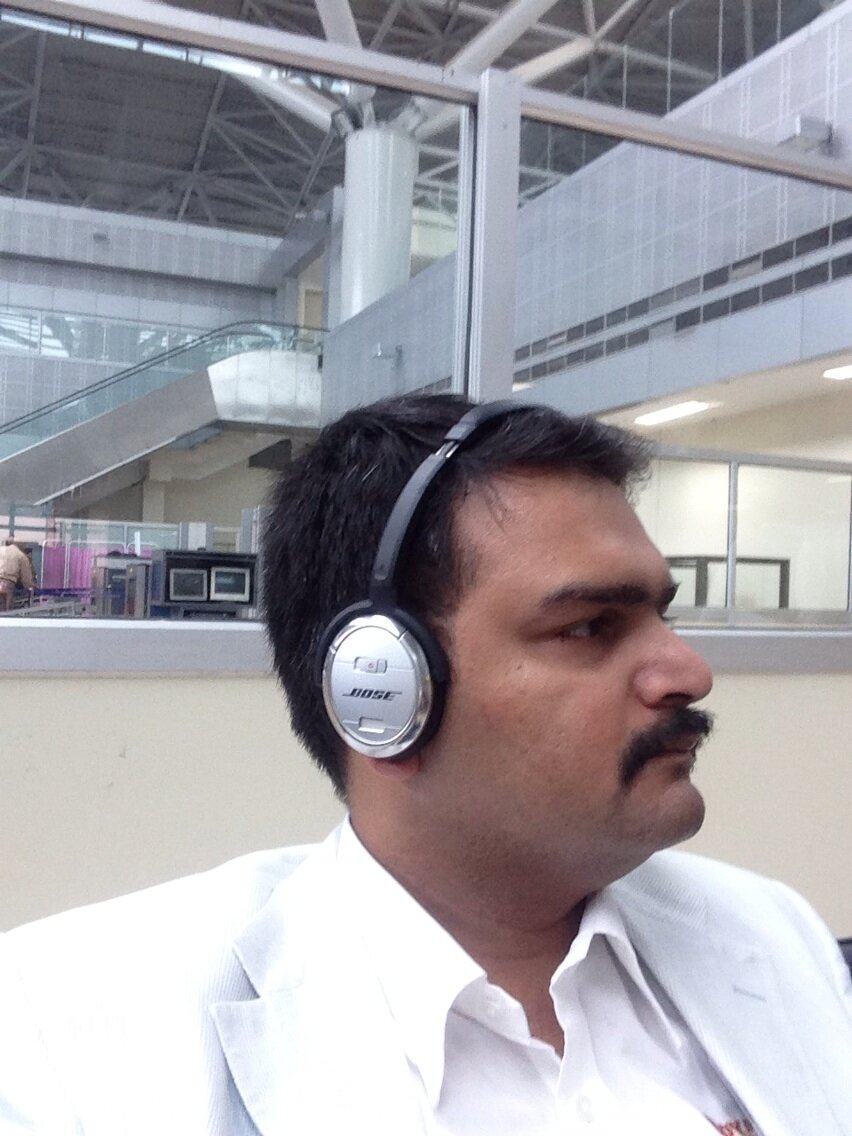
A Firefly finally takes off
Monday - 22 Jan. ‘24 is a very important day in my professional life. I complete eight months today in my role as Executive Vice President a...

-
12 December is celebrated annually as Retail Employees Day, an occasion to thank the frontend staff who have taken up Retail as their pref...
-
The world is split into two for the last week or so, ever since India’s self-made billionaire and tech mogul Mr. Narayana Murthy (NRN) said ...
-
It’s been over 5 months since I wrote anything on this blog, especially. Not that I didn’t have anything to observe, even better to share my...









